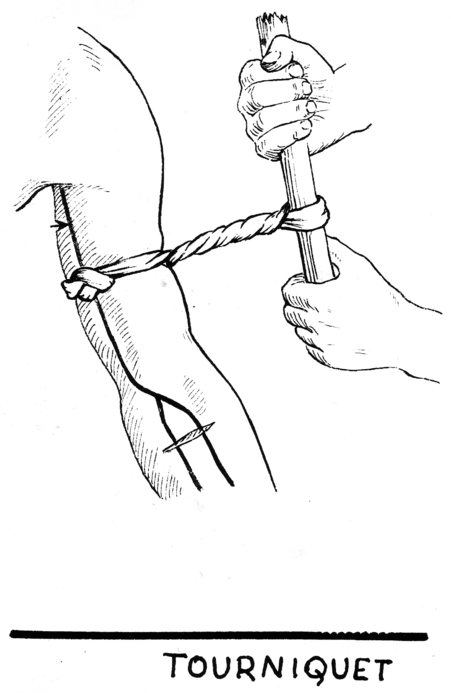Necessity is the mother of tourniquet invention
A lot of wilderness medicine teaching is geared towards bringing the right tools for the circumstances, but sometimes you end up in a situation where you don’t have the best tool for the job. Thus, quite a bit of preparing for austere environments is making improvised devices out of whatever is lying around.
This article discusses one of those MacGyvered lifesaving tools. While there are many commercially available tourniquets out there, there are still times when you have to create one out of something else. As the article points out, you might simply run out of tourniquets at a mass casualty incident. When the situation arises that you have to create a tourniquet, what items should you use to make one?
The authors chose to test the band and windlass design. They mention that this was based on a paucity of non-military literature about various improvised tourniquets. The band was always cotton cloth folded into shape, and they tested 3 items common to the urban environment as windlasses. While pencils, chopsticks, and popsicle sticks might not exist in the wilderness, they’re a reasonable idea for testing. It’s not like you can ensure quality control with broken twigs.
Using a computerized above-the-knee amputation simulator, they then attempted to stop bleeding using the improvised tourniquet and one of the potential windlasses. If 1 pencil, popsicle stick, or chopstick was insufficient to stop bleeding (or broke), the test would be repeated with 2, 3, or 4 until 100% effectiveness was reached.
Granted, this study only looked at occluding arterial flow instead of venous, and had a very narrow scope of windlasses. In the end, the take-home message is as follows:
- Popsicle sticks suck as windlasses, and you shouldn’t use them. They often broke on the first turn.
- Pencils are better, but still pretty terrible.
- Strangely enough, chopsticks work best of those tested.
- 2, or better yet 3, is always better than 1 when it comes to windlasses
- Maybe use something other than flimsy wood objects when you make an improvised windlass, such as plastic or metal
- Use a commercial device if you can find one
References
- Kragh JF Jr, Wallum TE, Aden JK 3rd, Dubick MA, Baer DG. Which Improvised Tourniquet Windlasses Work Well and Which Ones Won’t? Am J Emerg Med. 2015 Jul;33(7):976-7 [PMID 25771027]

EBM Gone Wild
Wilderness Medicine
Emergency physician with interests in wilderness and prehospital medicine. Medical Director of the Texas State Aquarium, Padre Island National Seashore, Robstown EMS, and Code 3 ER | EBM gone Wild | @EBMGoneWild |

